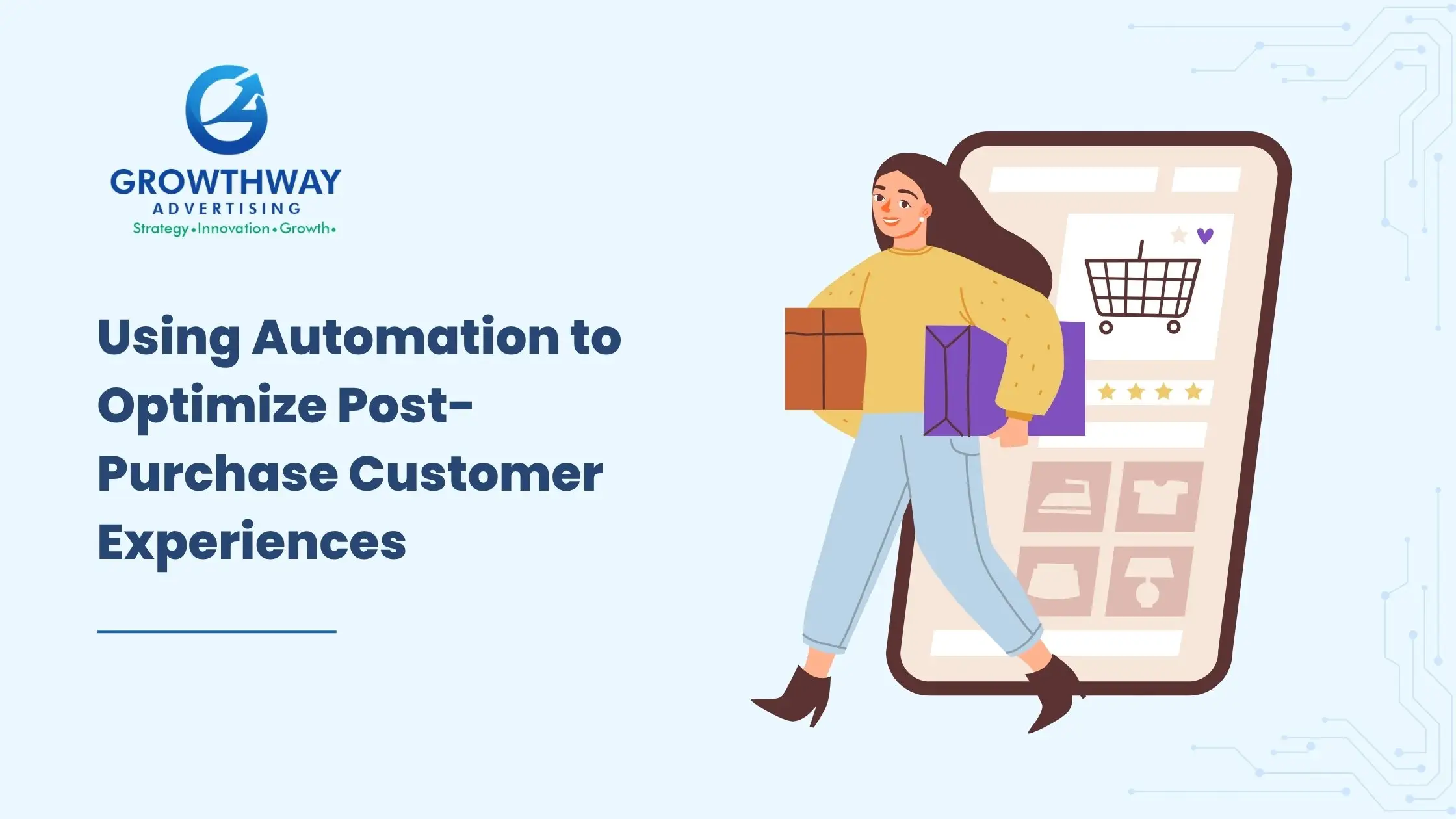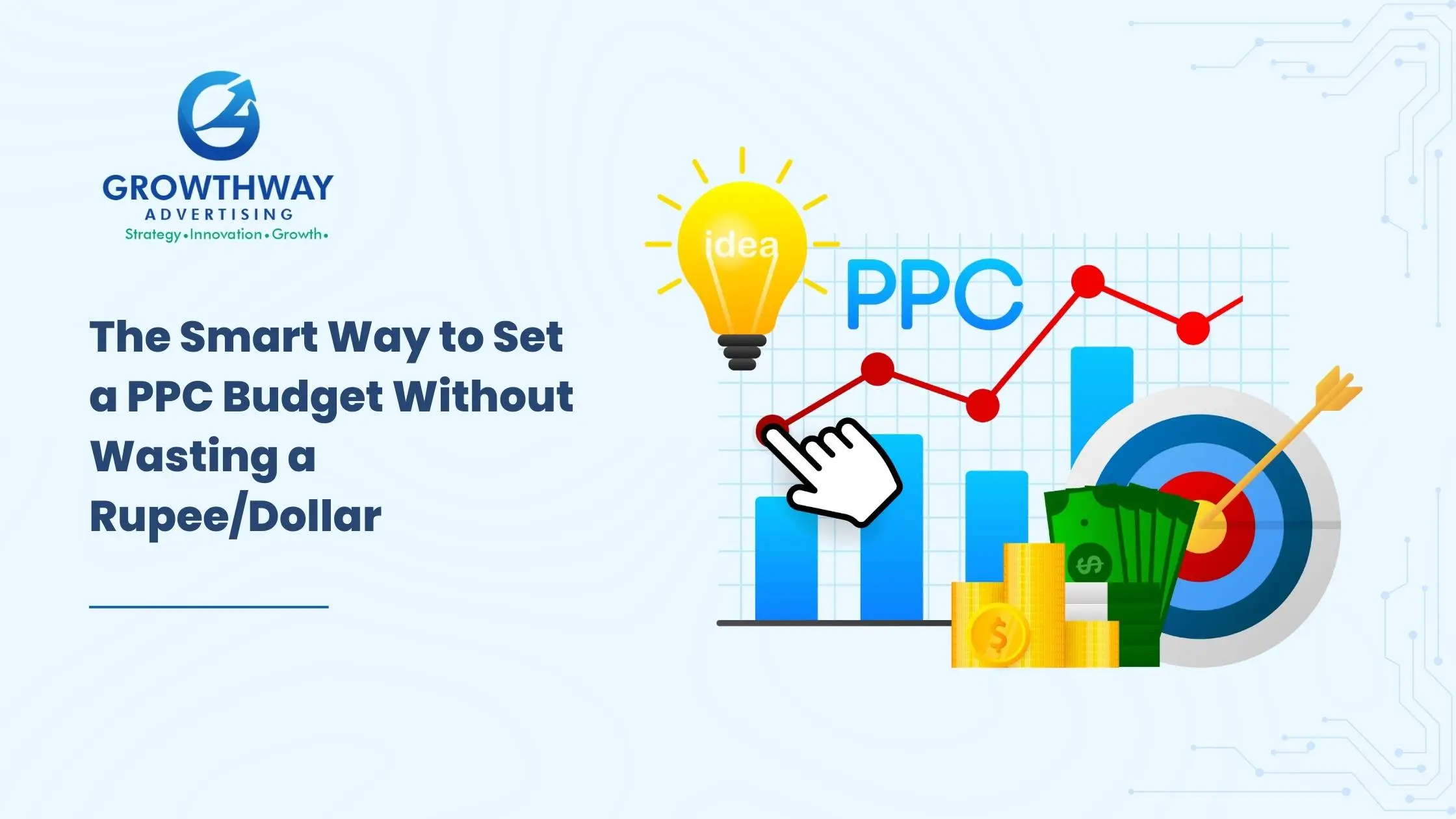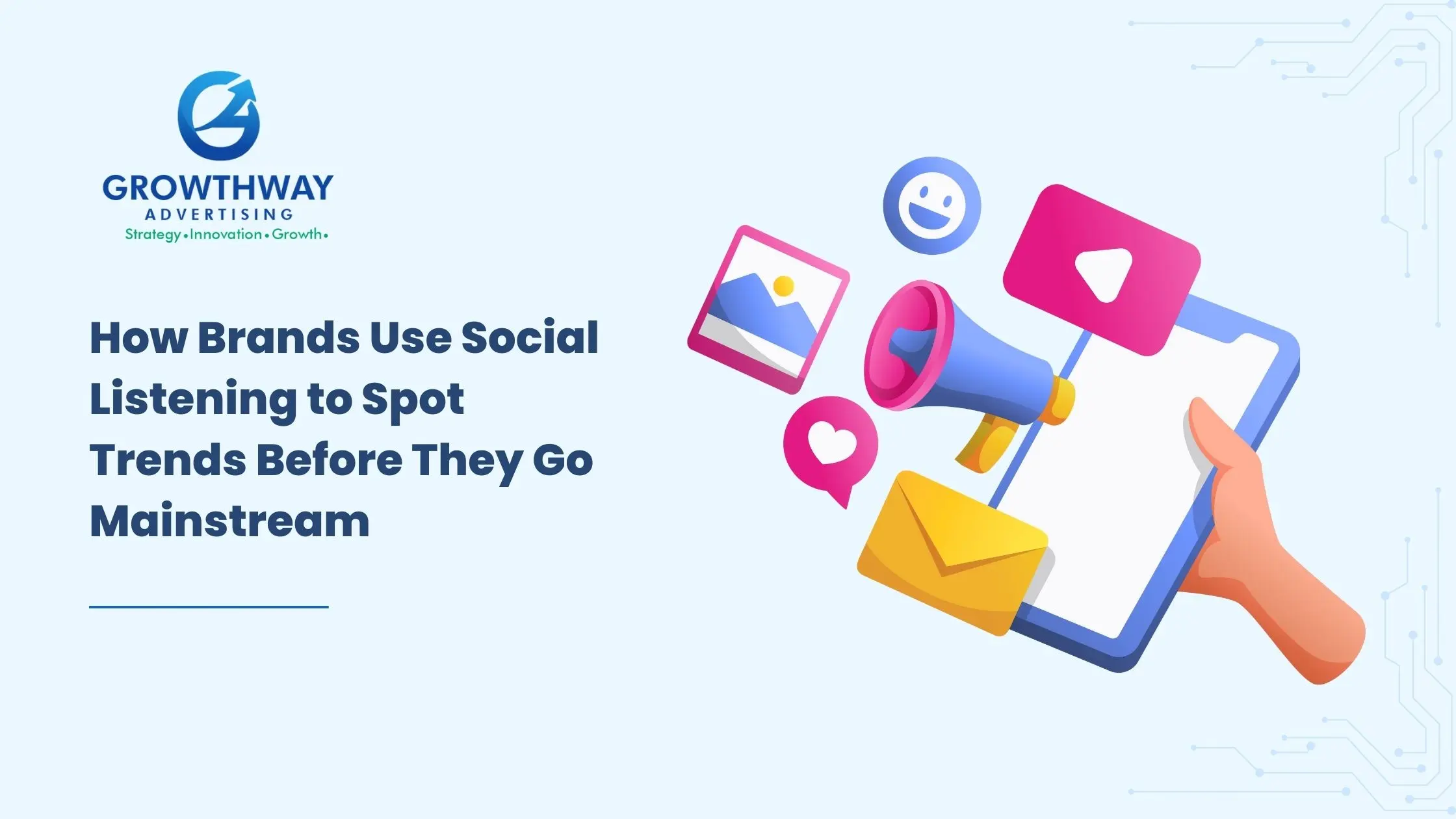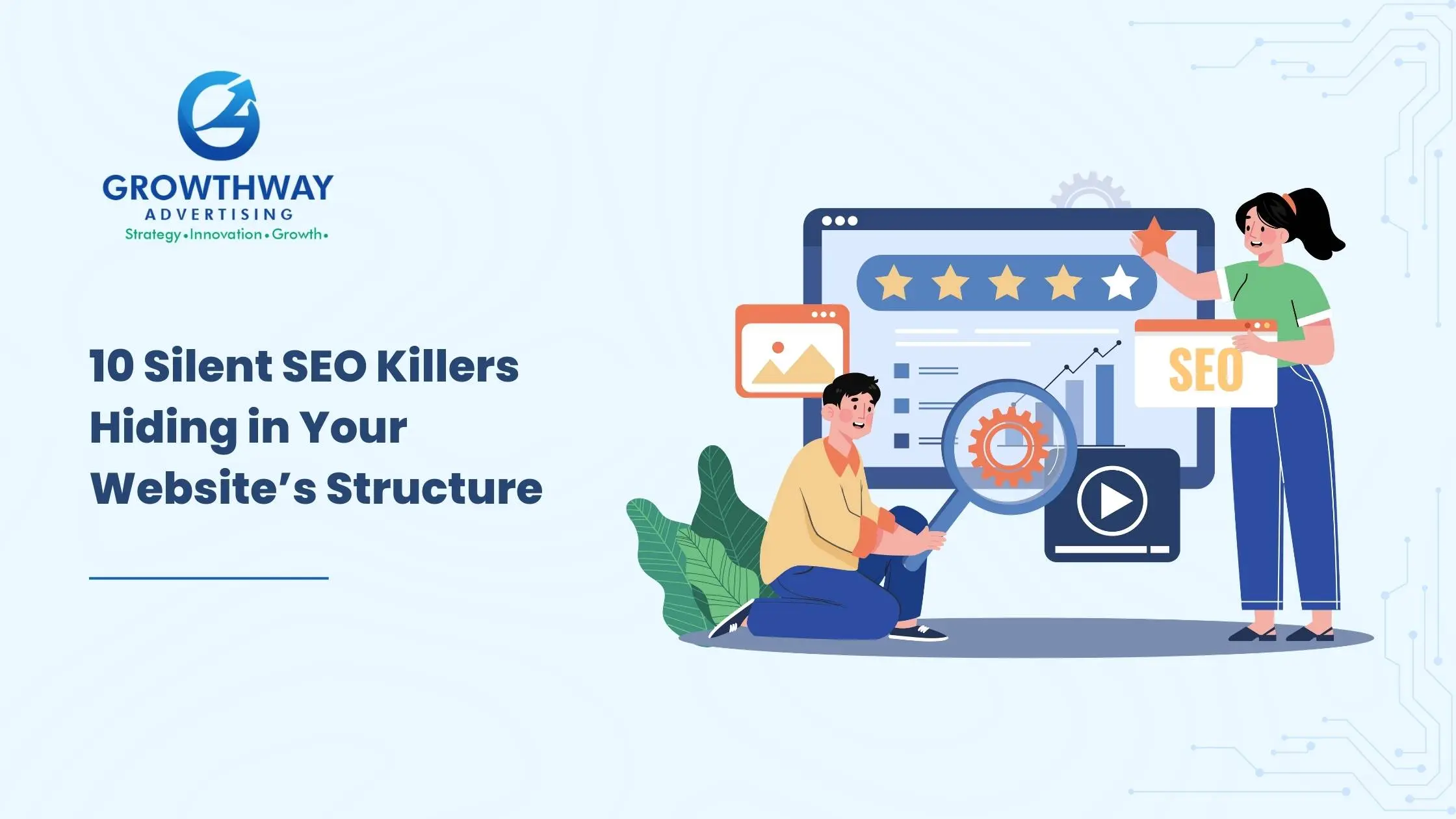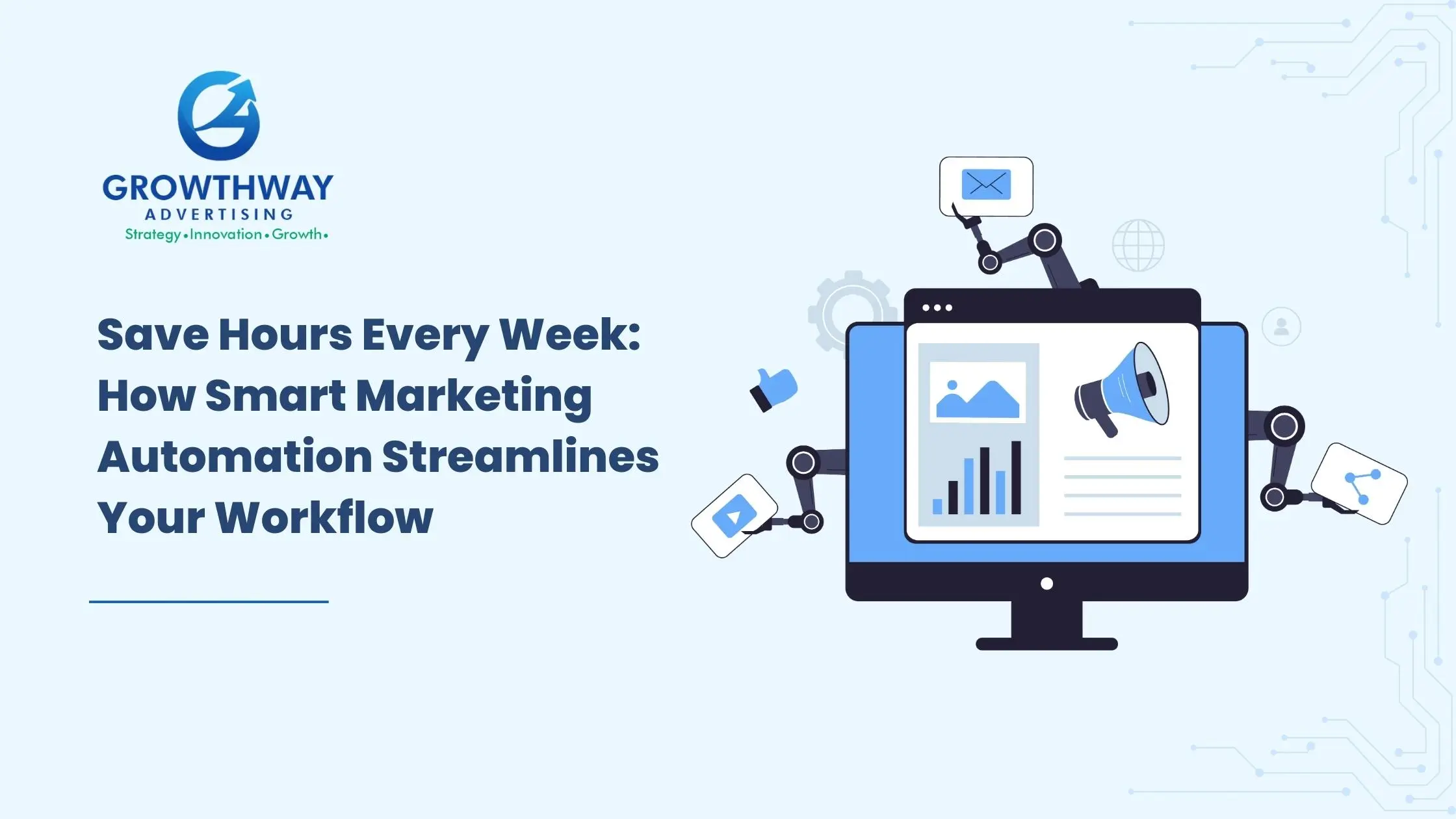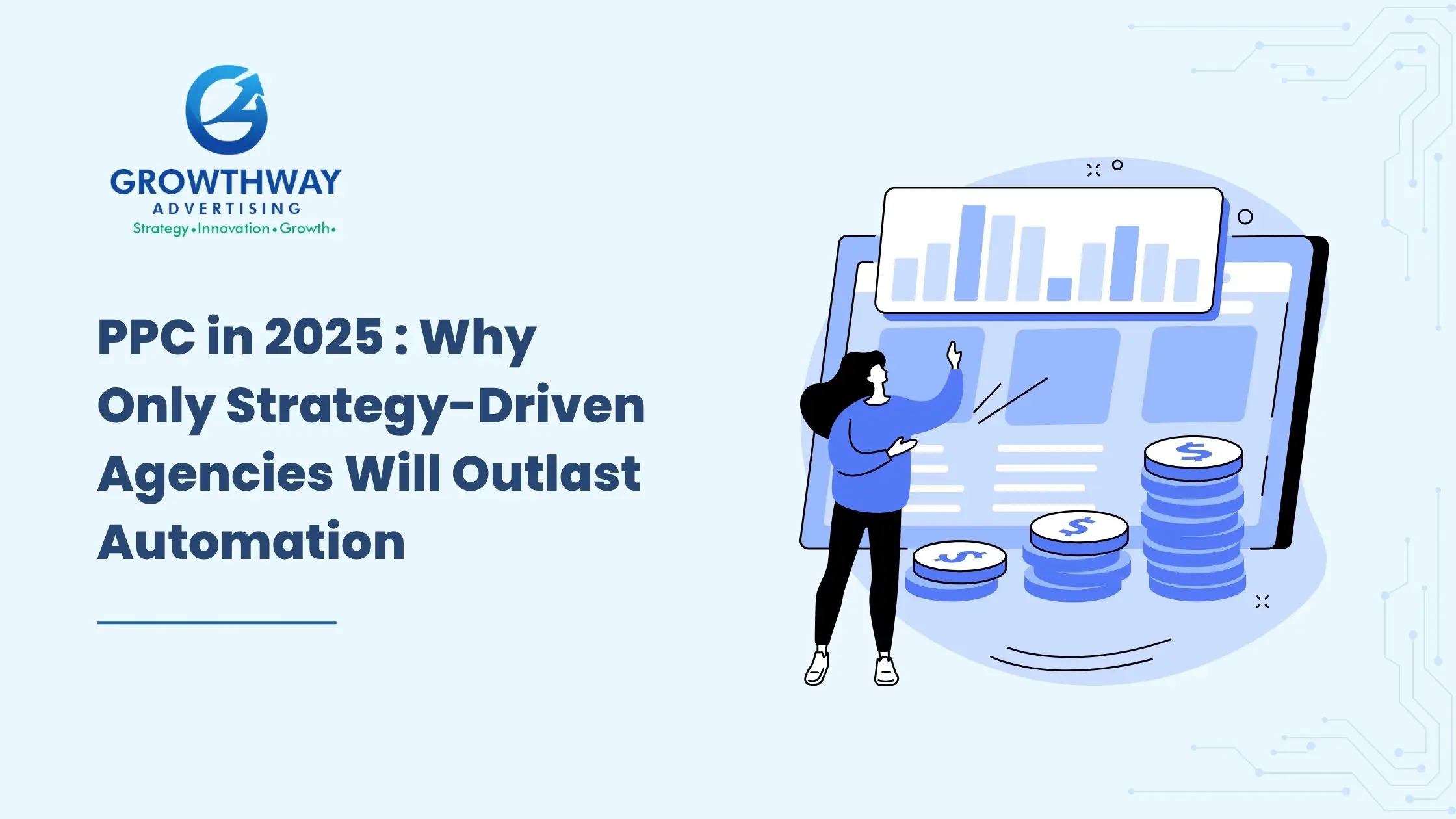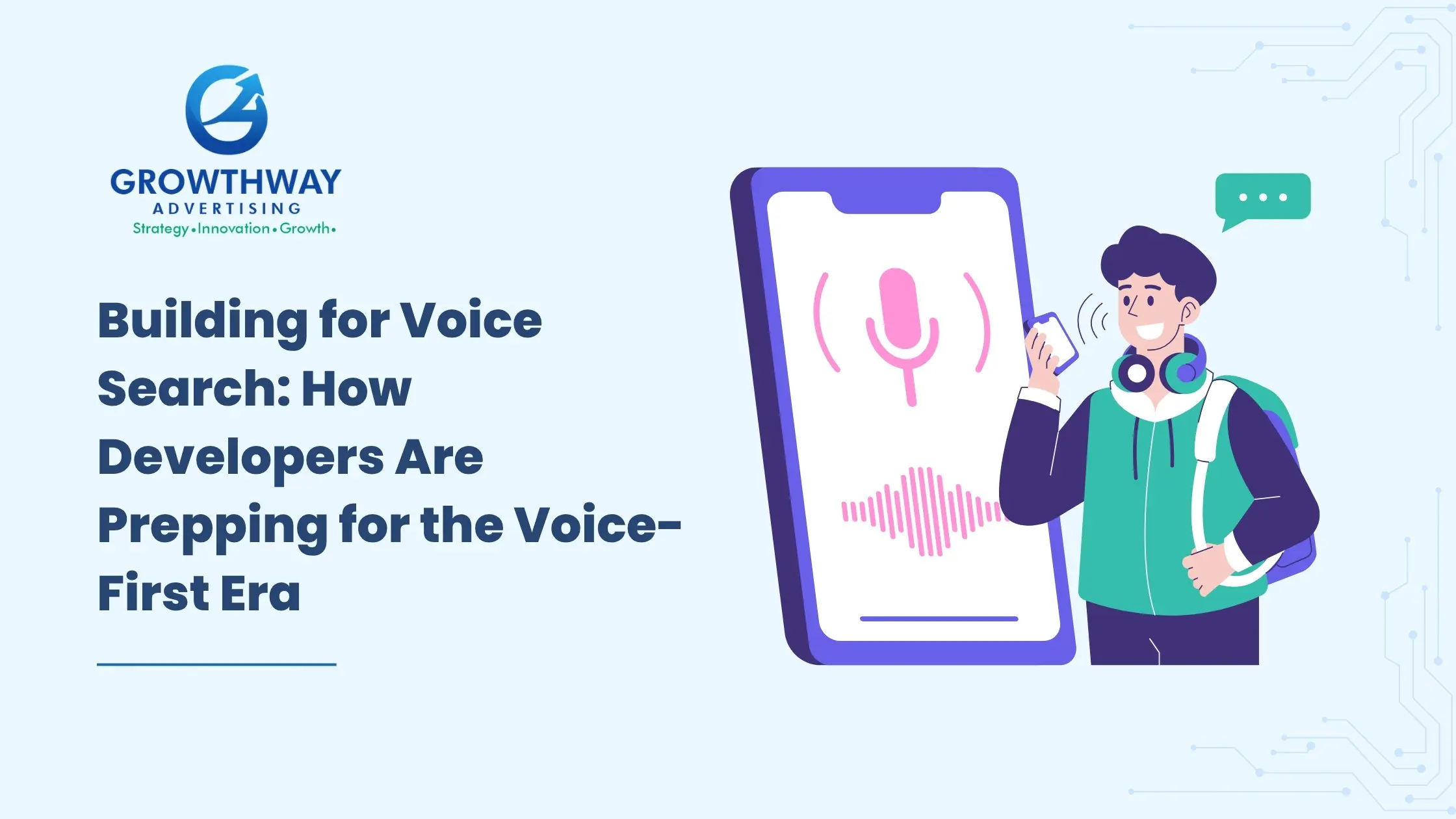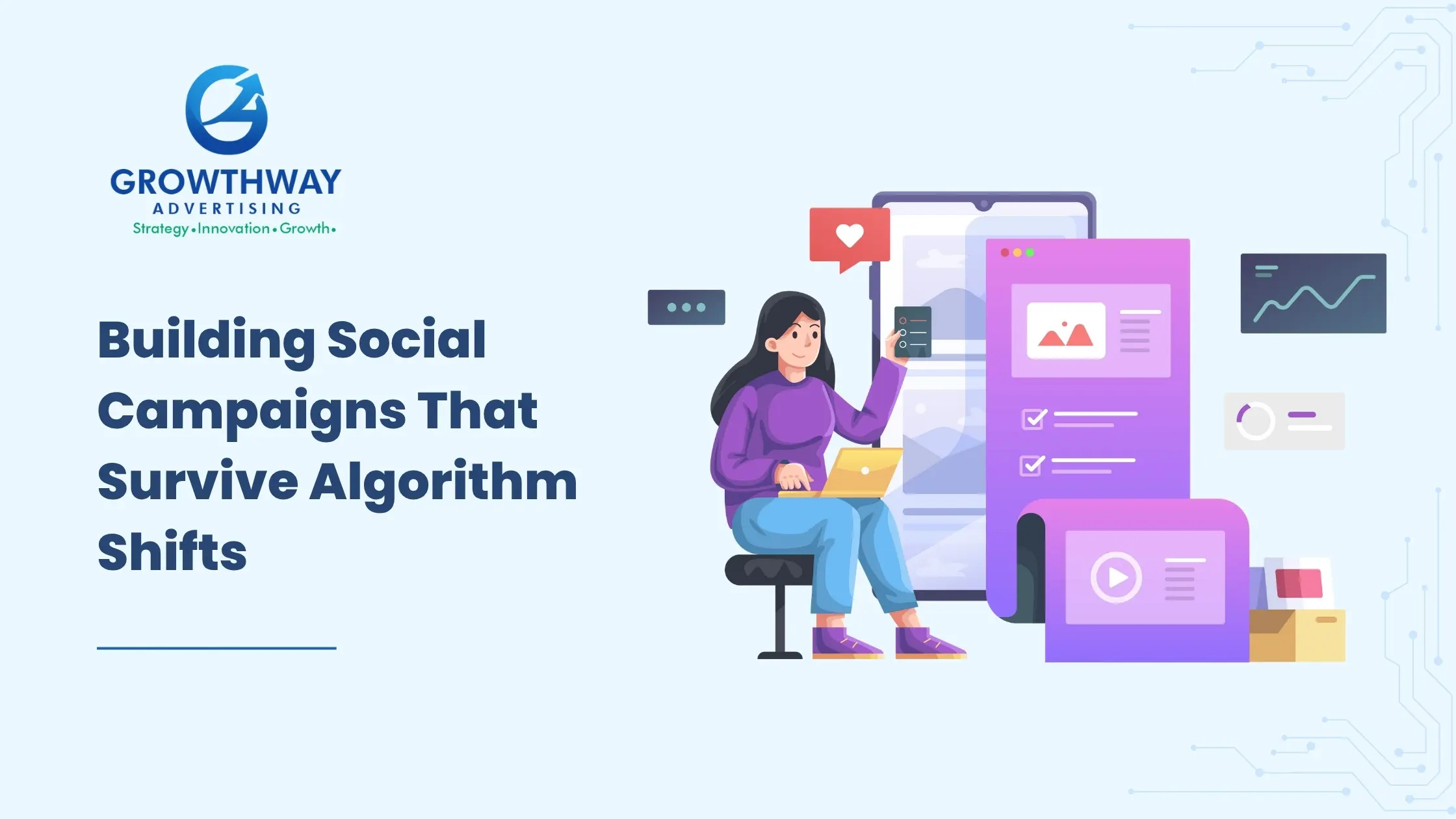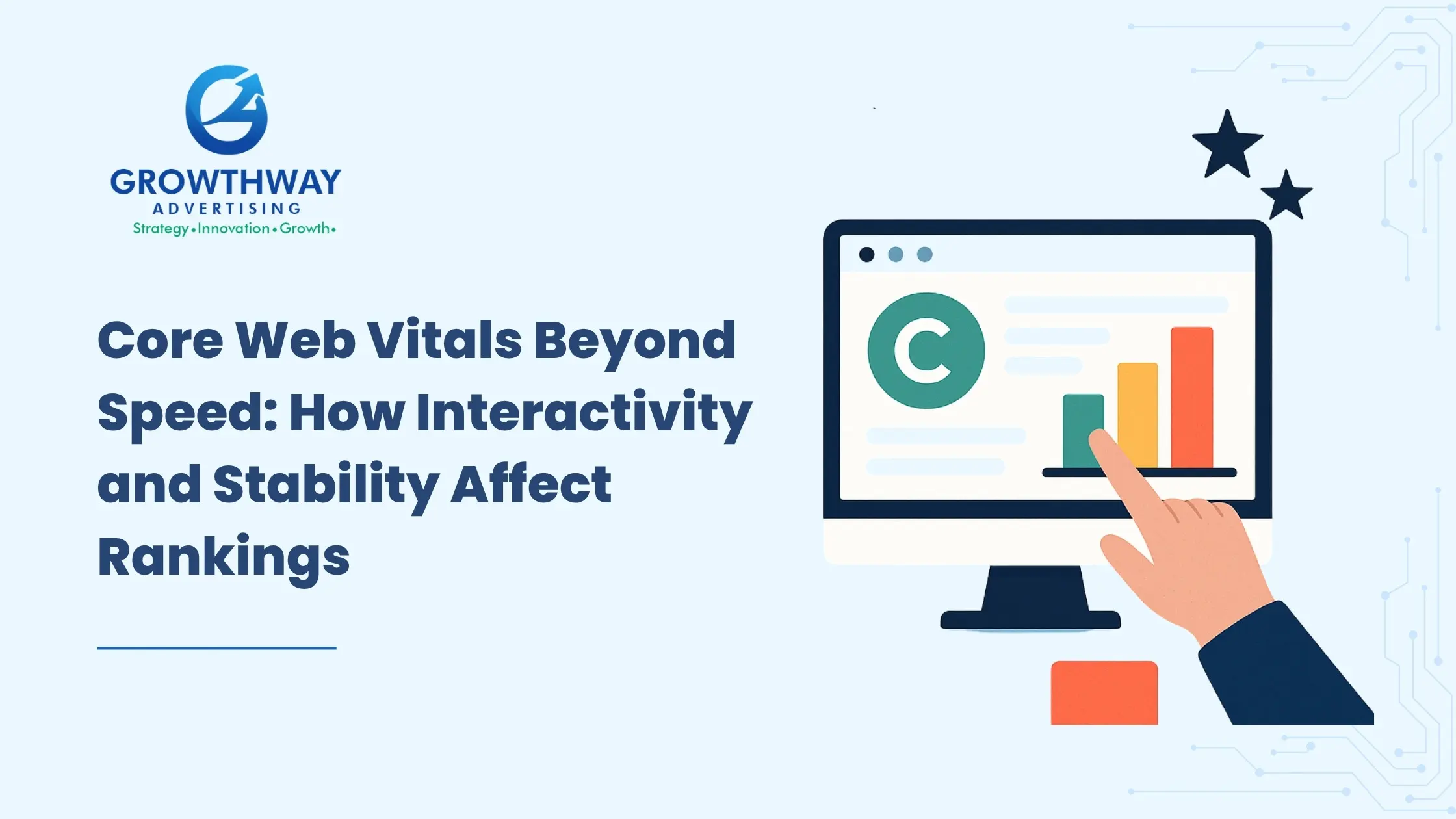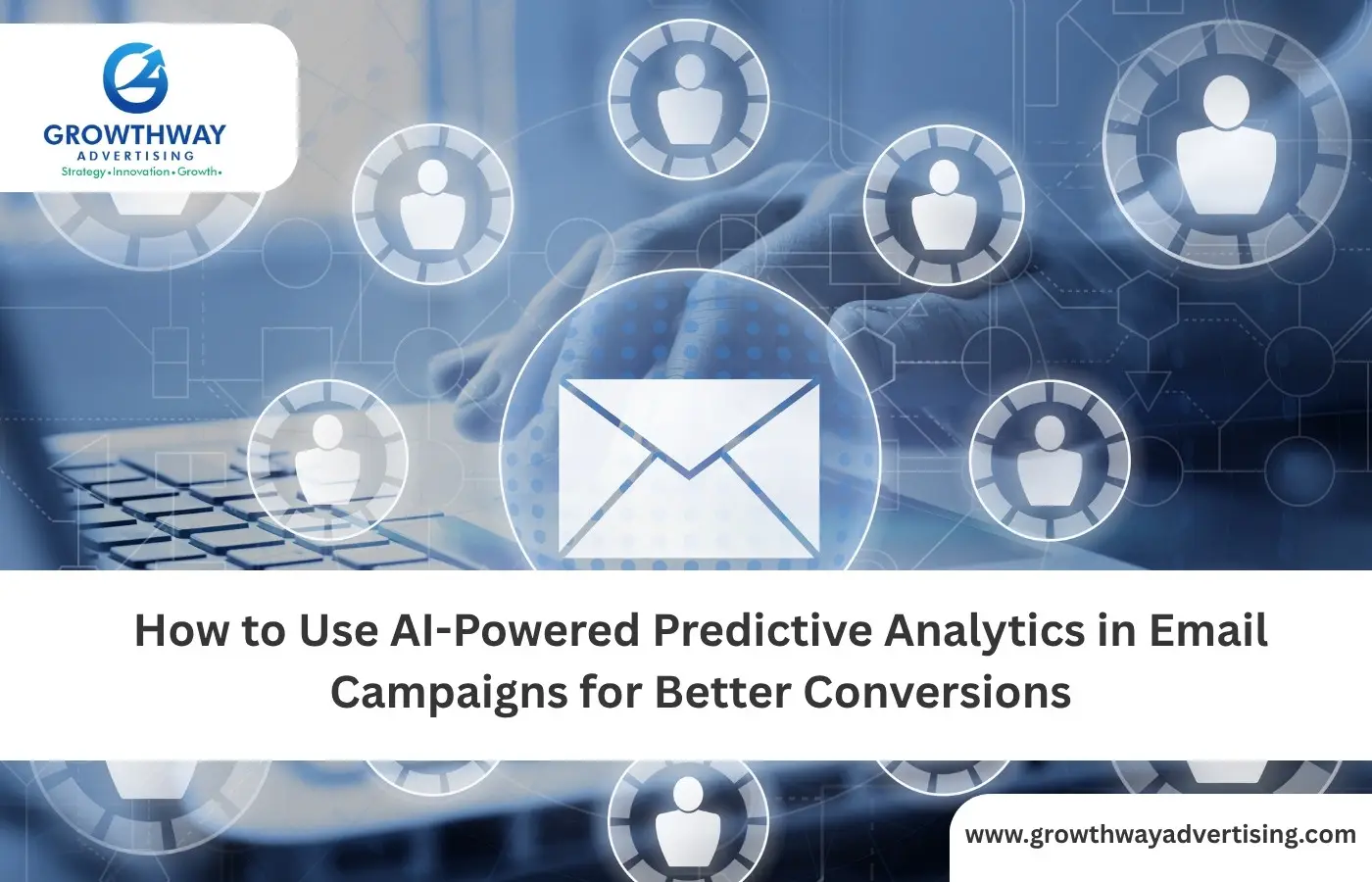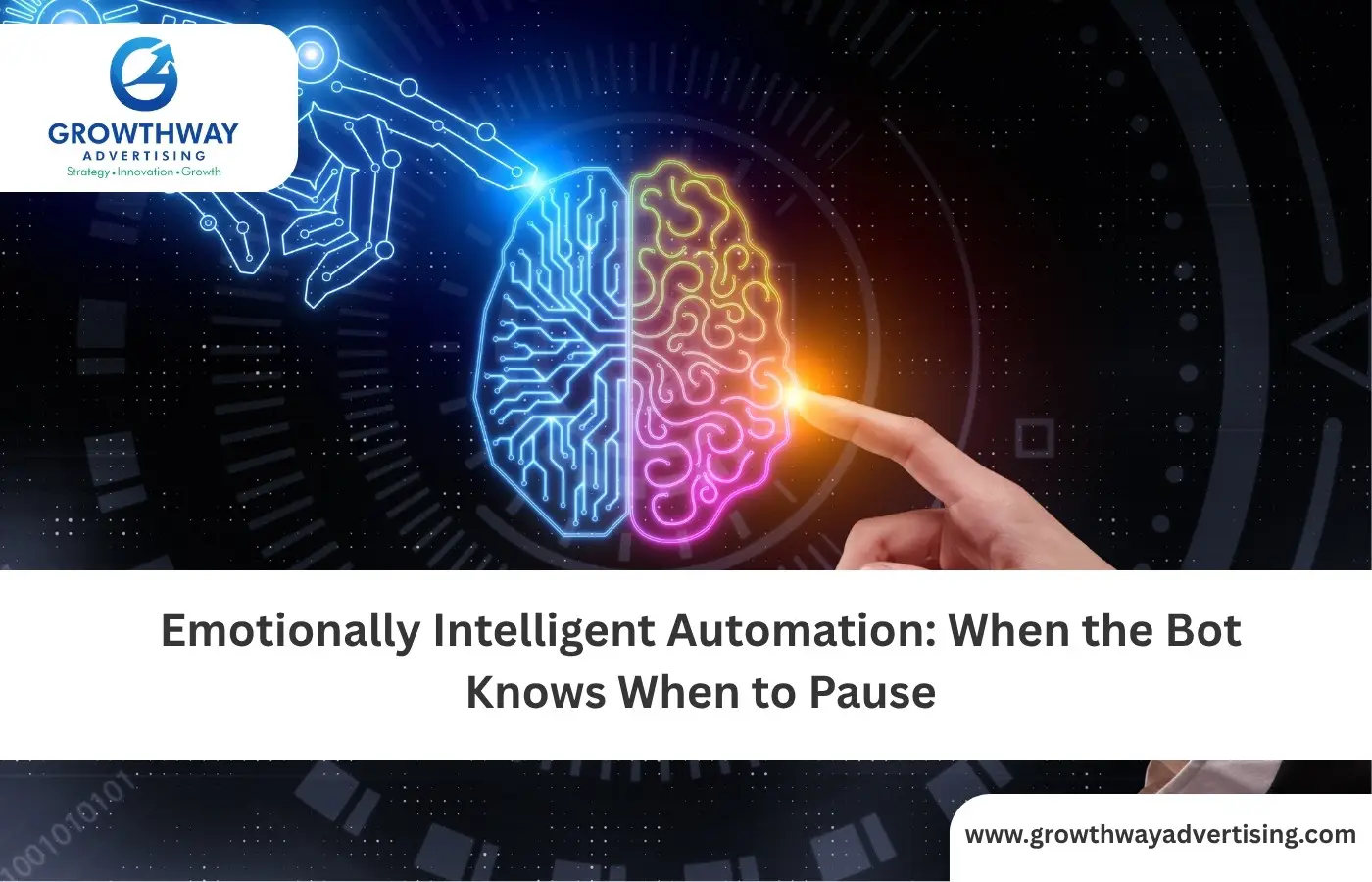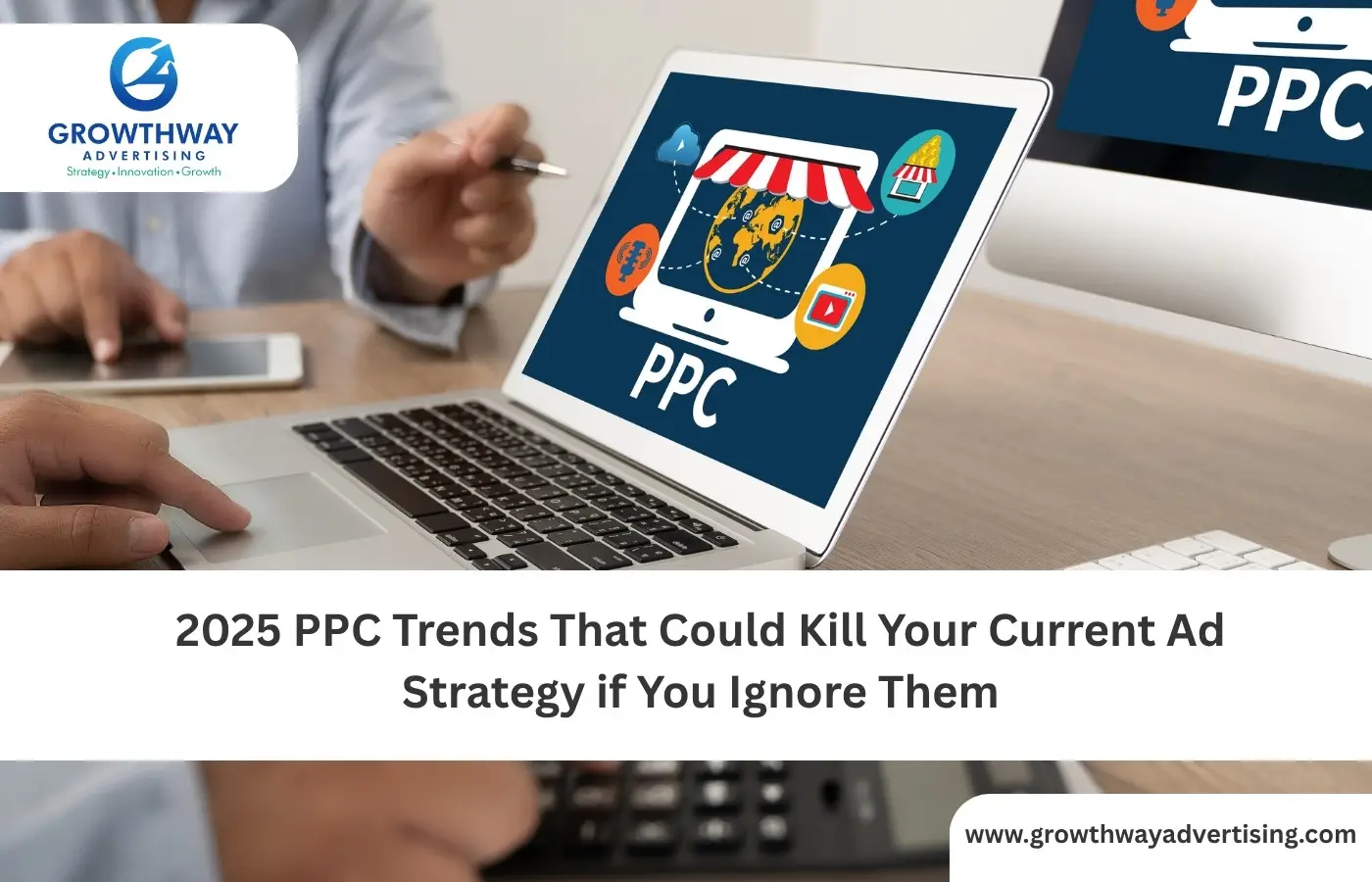In eCommerce, most brands obsess over the conversion. But here’s the thing, the real revenue starts after the first sale. The post-purchase experience is where loyalty forms, referrals happen, and customers decide if they’ll buy again. Yet, too many businesses treat it as an afterthought. That’s where automation in post-purchase experience changes the game.
By automating touchpoints like follow-ups, order updates, and loyalty programs, brands can build lasting relationships instead of one-off transactions. Done right, post-purchase marketing automation not only boosts satisfaction but also drives higher Customer Lifetime Value (CLV) , the metric every eCommerce manager should care about most.
Why the Post-Purchase Stage is Critical
Most brands overinvest in customer acquisition and underinvest in retention. According to a 2025 HubSpot report, acquiring a new customer now costs six to seven times more than retaining an existing one. Yet Bain & Company found that a 5% increase in retention can lead to a 25–95% boost in profits. That gap highlights why post-purchase optimization isn’t optional anymore.
Despite the data, many businesses stop nurturing the relationship after checkout. Customers receive a generic confirmation email, maybe a shipping update, and then silence. This is the blind spot where churn quietly grows.
The good news? Modern marketing automation services make it possible to stay connected at every stage of the automated post-purchase journey. From personalized thank-you flows to replenishment campaigns, automation ensures your brand never drops the ball once the sale is made. In 2025, brands using customer retention automation see an average 35% higher repeat purchase rate, according to Omnisend’s latest eCommerce benchmark report.
Top Automation Opportunities in Post-Purchase Experiences
The most successful brands use Ecommerce marketing automation to design smart, value-driven follow-ups that build trust and increase CLV. Here’s where automation adds the most impact:
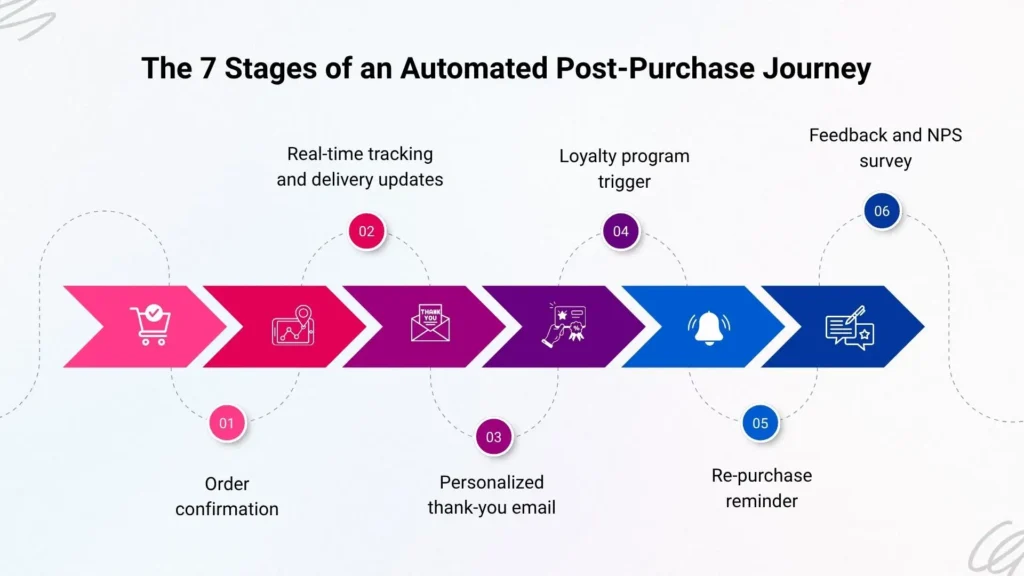
1. Automated Order Tracking and Delivery Updates
Transparency builds confidence. Automated shipping updates and delivery notifications reduce customer anxiety and cut support tickets by up to 40%. Integrating your order management system with automated marketing services ensures customers get real-time tracking links, estimated delivery dates, and delay alerts, all without human intervention.
2. Personalized Thank-You Flows and Follow-Up Emails
A simple “thank you” can turn a buyer into a loyal fan. Automated workflows can personalize thank-you messages with the customer’s name, product purchased, and even a short brand story. Add dynamic content blocks suggesting “How to use your new product” or a quick tutorial video. According to Klaviyo, personalized follow-ups generate six times more engagement than generic ones.
3. AI-Driven Product Recommendations and Predictive Upselling
Once the order is fulfilled, use predictive analytics to suggest complementary items. For example, if a customer buys running shoes, the system can automatically recommend performance socks or an upcoming collection. This post-purchase marketing automation approach mirrors Amazon’s “Customers who bought this also bought…” model one of the most profitable features in eCommerce history.
4. Loyalty Program Triggers and Reward Automation
Automation can seamlessly enroll customers into loyalty programs or send milestone rewards. For instance, reaching a $500 spend threshold could automatically trigger a discount code or bonus points email. These customer retention automation workflows foster long-term engagement without manual tracking.
5. Smart Re-Purchase Reminders and Replenishment Campaigns
For consumable or repeat-use products, Ecommerce marketing automation can schedule reminders just before the product is likely to run out. Think coffee pods, skincare, or supplements. With predictive timing, these reminders feel helpful, not pushy driving repeat orders at the perfect moment.
Each of these automations not only saves time but also personalizes the brand experience at scale, something no manual system can consistently achieve.
Leveraging AI and Predictive Analytics
The next evolution of automation in post-purchase experience is being powered by AI. Predictive analytics allows marketers to anticipate customer needs before they express them. By analyzing purchase history, browsing patterns, and engagement data, brands can create hyper-personalized experiences that feel human, not automated.
For instance, AI tools can segment customers into micro-audiences based on behavior like “first-time buyers likely to repurchase” or “loyal customers at risk of churn.” These insights then trigger customized sequences via your marketing automation company platform.
Chatbots are another powerful post-purchase touchpoint. Integrated with CRM systems, AI chatbots can handle return requests, answer product questions, or even recommend accessories all while collecting feedback that improves future interactions.
Take Sephora, for example. Their AI-driven automation engine recommends follow-up skincare products based on past purchases and customer reviews. Similarly, Nike uses predictive analytics to nudge customers toward re-ordering before old gear wears out. These brands show how marketing automation consultation and AI can turn post-purchase outreach into a profit-driving asset.
Integration with Omnichannel Journeys
Customers don’t just live in their inbox anymore. They expect consistent, connected communication across channels email, SMS, push notifications, and even social DMs. Effective post-purchase marketing automation ties these together.
Imagine this flow: A customer receives an SMS confirming delivery, followed by an email thanking them for their order, and then a social retargeting ad showing accessories related to their purchase. Each touchpoint feels cohesive because it’s synced through your CRM or CDP.
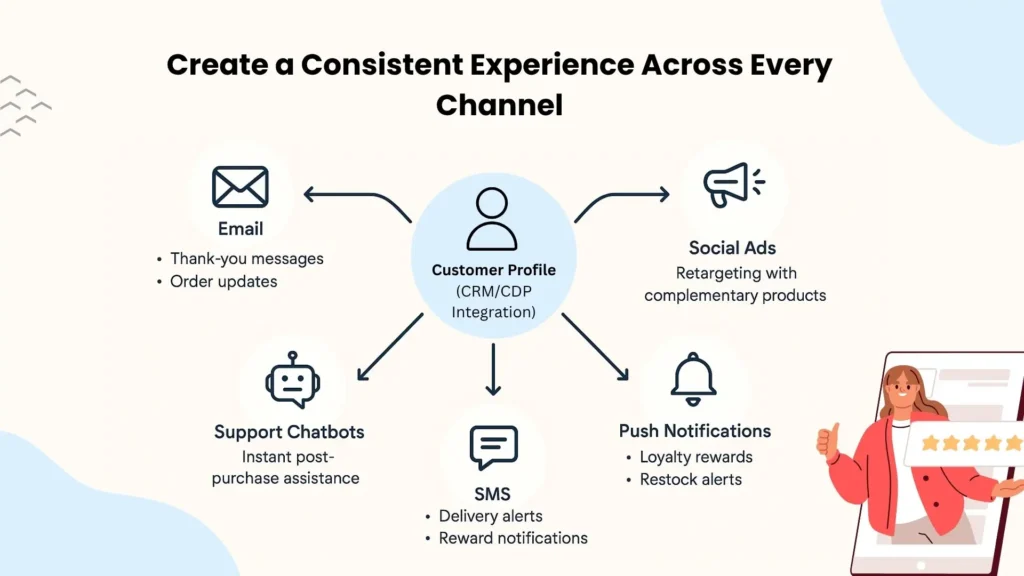
That’s where marketing automation services and customer data platforms (CDPs) intersect. They centralize customer profiles, so your brand speaks in one consistent voice whether it’s through Shopify, Klaviyo, HubSpot, or Salesforce. This unified experience is key to building retention in a fragmented digital world.
Best Practices for Implementing Post-Purchase Automation
Launching a successful automated post-purchase journey takes more than just turning on a workflow. It requires thoughtful setup, testing, and measurement. Here’s how to do it right:
1. Start with Clean Data and Smart Segmentation
Automation is only as good as the data it runs on. Regularly clean your CRM to remove duplicates, update contact preferences, and tag customers accurately. Create segments like “new buyers,” “repeat purchasers,” and “inactive customers” to deliver relevant follow-ups.
2. Test and Optimize Before Scaling
Never set and forget your automations. A/B test subject lines, timing, and content. For example, does a “Thank you + Product Education” email perform better than a “Thank you + Discount” one? Measure and refine.
3. Monitor Customer Satisfaction Metrics
Track Net Promoter Score (NPS), repeat purchase rate, and average order value. These metrics reveal how effective your customer retention automation truly is. Use automation dashboards to visualize trends and make data-driven adjustments.
Partnering with a marketing automation company or seeking marketing automation consultation can help ensure these workflows align with your brand goals and integrate properly with your tech stack.
Conclusion
What this really means is that the transaction isn’t the finish line, it’s the starting point for lasting growth. Brands that use automation in post-purchase experience move beyond transactional communication and into relationship-driven engagement.
From AI-driven product suggestions to personalized loyalty rewards, automation keeps customers close and conversations ongoing. And as competition in eCommerce tightens, post-purchase marketing automation isn’t just about convenience, it’s about staying relevant, profitable, and human at scale.
By investing in Ecommerce marketing automation and partnering with the right marketing automation services, brands can turn every purchase into the beginning of a longer, more valuable customer relationship one that continuously increases Customer Lifetime Value.
FAQ’s
An automated post-purchase journey keeps customers engaged beyond checkout. It builds trust, reduces churn, and increases repeat purchases all while saving time for marketing teams.
Post-purchase marketing automation personalizes every touchpoint from thank-you messages to re-purchase reminders. Consistent, relevant communication keeps customers connected and boosts retention rates.
Key automation opportunities include real-time order tracking, personalized thank-you flows, loyalty program triggers, and AI-driven product recommendations all part of customer retention automation.
Top marketing automation services include Klaviyo, HubSpot, ActiveCampaign, and Omnisend. Each integrates with eCommerce platforms like Shopify or WooCommerce to streamline workflows and data sync.
Automation increases CLV by improving the post-purchase experience. When customers receive helpful updates, rewards, and personalized offers, they’re more likely to repurchase and spend more over time.
AI powers smarter segmentation, predictive upselling, and conversational chatbots. These tools make marketing automation services more intelligent, enabling one-to-one personalization at scale.

